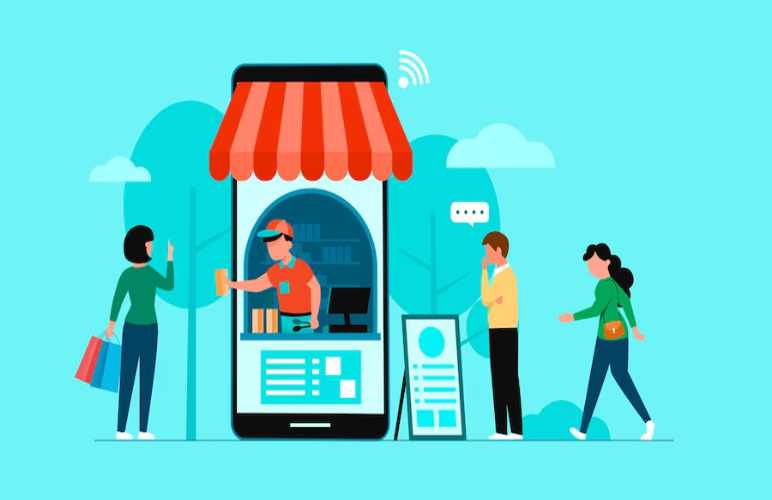Remarketing, a cornerstone of digital marketing, allows you to reconnect with website visitors who haven’t converted. By strategically displaying targeted ads, you nudge them back to your site and increase the chances of a sale. But what happens when user behavior extends beyond the digital realm? Can you target those who visited your physical store or interacted offline?
This blog delves into the limitations of default remarketing audiences, exploring what falls outside the scope of traditional online tracking. We’ll also explore alternative strategies to bridge the online-offline gap and reach a wider audience.
The Power of Remarketing Audiences

Remarketing leverages cookies and mobile advertising IDs to track user behavior on your website or app. These digital footprints allow you to create audiences based on various criteria, such as:
- Page visits: Target users who visited specific product pages or abandoned their cart.
- Time spent: Reconnect with users who spent a significant amount of time browsing your site, indicating high interest.
- Actions taken: Engage users who downloaded a whitepaper, signed up for a newsletter, or interacted with a specific element.
By understanding user behavior, you can tailor ads that resonate with their past interactions, increasing the relevance and effectiveness of your campaigns.
The Offline Wall: Where Default Audiences Stop

While remarketing excels in the digital sphere, there’s a crucial limitation: it can’t directly track offline user behavior. Here’s why targeting those who visited your physical store isn’t included in default audience creation:
- Cookie Dependency: Remarketing relies on cookies or mobile advertising IDs to identify users. These identifiers are typically placed on devices when users visit your website. Physical stores lack this digital touchpoint.
- Data Disconnect: Online and offline data often exist in separate silos. Unless you have a system to connect in-store visits with online user profiles, you can’t leverage website behavior to target these customers.
This offline barrier creates a gap in your remarketing strategy. Customers who might be highly engaged after visiting your store remain invisible to your online retargeting efforts.
Beyond the Wall: Strategies for Bridging the Gap
While default audiences may not capture offline interactions, there are ways to bridge the online-offline divide and reach those who ventured beyond your website:
1. Loyalty Programs: Loyalty programs with membership cards offer a valuable solution. By linking in-store purchases with online accounts, you can create audiences based on past buying behavior. This allows you to retarget these customers with relevant ads, enticing them to return for another purchase.
2. Beacon Technology: Beacons, small devices that transmit signals to nearby smartphones via Bluetooth, offer exciting possibilities. When a user with your app enters your store, the beacon triggers an action, potentially prompting them to join your loyalty program or receive targeted promotions. This online-offline connection allows you to build remarketing audiences based on in-store visits.
3. CRM Integration: Integrating your Customer Relationship Management (CRM) system with your marketing platform allows you to create remarketing audiences based on past purchases or interactions captured in the CRM. This way, even without online tracking, you can target those who’ve engaged with your brand offline.
4. Incentivize Online Interaction: Encourage in-store customers to take an action that bridges the gap. Offer discounts or rewards for signing up for your email list or downloading your app. This not only captures valuable contact information but also allows you to retarget them with online campaigns.
5. Lookalike Audiences: Utilize platforms like Google Ads and Facebook Ads. These platforms allow you to create “lookalike audiences” based on your existing customer base. By uploading your CRM data, you can target users with similar demographics and online behavior, potentially reaching individuals who haven’t interacted with your website but share characteristics with your in-store clientele.
Embracing the Omnichannel Approach
By acknowledging the limitations of default remarketing audiences and implementing alternative strategies, you can create a more comprehensive approach. Here are some key takeaways:
- Offline interactions matter: Recognize the value of in-store visits and bridge the online-offline gap to reach this valuable audience segment.
- Data is king: Integrate your data sources to create a holistic picture of your customers.
- Think beyond cookies: Explore alternative targeting methods like loyalty programs and beacon technology.
- Incentivize online engagement: Motivate in-store customers to connect with you online, enriching your retargeting efforts.
- Embrace the omnichannel approach: Seamlessly blend online and offline marketing strategies to provide a unified customer experience.
By breaking down the offline wall, you can unlock new possibilities in your remarketing campaigns. By reaching customers across all touchpoints, you can nurture stronger brand loyalty and drive conversions, both online and in-store.
Also Read:-
- The Engine Powering Google Ads Automated Strategies
- Demystifying Auto-Tagging: The Power of GCLID in Google Ads
- Cracking the Code: Unveiling the 3 Essential Campaign Parameters for Manual Tracking

